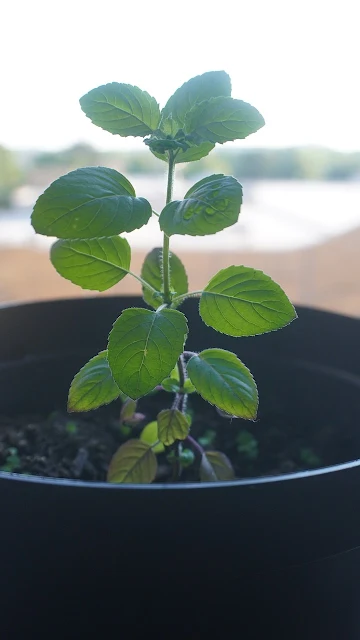Holy basil herb uses
Holy basil uses in english
NAMES:
Persian, Shah Saparam - Bengali Tulshi - Hindi, Brenda. English Holy Basil -Latin
Osmium Sanctum
COMMON DETAIL:
Popular is common. Its plant is one to two feet tall. Leaves oblique. At the top of each
branch are small pink flowers. Odor is also a type
of it.
Color:
leaves
greenish-yellowish
Temperament:
Hot 1st degree Dry 2nd degree Food quantity Fresh 4 Rati to 1 mash Place of birth This
small plant
is found everywhere. It is especially planted in temples.
Taste:
slightly astringent.
Holy basil herb uses:
The dry plant is expectorant and stomachic. The leaves are anti-fever and anti-cold and
the seeds are mucilaginous, soothing and emollient. This plant is planted in Hindu
households largely from a religious point of view. Tulsi has a glue effect for
fevers.Seasonal fevers, basil leaves are rubbed together with black pepper. Tulsi plant
repels insects, especially bed bugs it is mixed with honey and licked several times a day
in case of sore throat. Tulsi plant repels insects, especially bed bugs. The leaves are
mixed with Kars Sonth and given in the colic of children and the water of the fresh
leaves is squeezed and dripped in the ear for pain in the ear. Mahalal Auram - It repels
wind and weakens the stomach, it repels corruption and blood. The juice of the leaves
mixed with milk and sugar is a good substitute for tea.
Removes fatigue. Its leaves are rubbed together with lemon juice and applied on
ringworm and black spots on the face.
If the juice of basil leaves is mixed on the bare parts of the body, it will not be
mosquito-repellent. Where basil plants are planted, malaria-causing mosquitoes will not
be near. come Chewing 5 to 6 leaves of tulsi with 3 pieces of black pepper prevents
seasonal fever. Its leaves contain a yellowish-greenish volatile pigment that freezes
after being kept for some time - non-toxic.











No comments